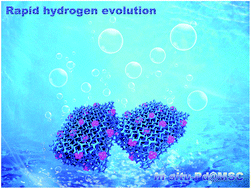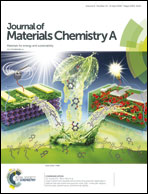A solvent-switched in situ confinement approach for immobilizing highly-active ultrafine palladium nanoparticles: boosting catalytic hydrogen evolution†
Abstract
A facile and effective solvent-switched in situ confinement approach (SSISCA) has been developed to immobilize ultrafine and clean Pd NPs of ∼1.75 nm into a nanoporous carbon support. The Pd NPs in situ confined within the carbon nanopores possess high catalytic activity and selectivity for hydrogen evolution from formic acid with a record-high TOF of 9110 h−1 at 60 °C.

- This article is part of the themed collection: 2018 Journal of Materials Chemistry A HOT Papers


 Please wait while we load your content...
Please wait while we load your content...